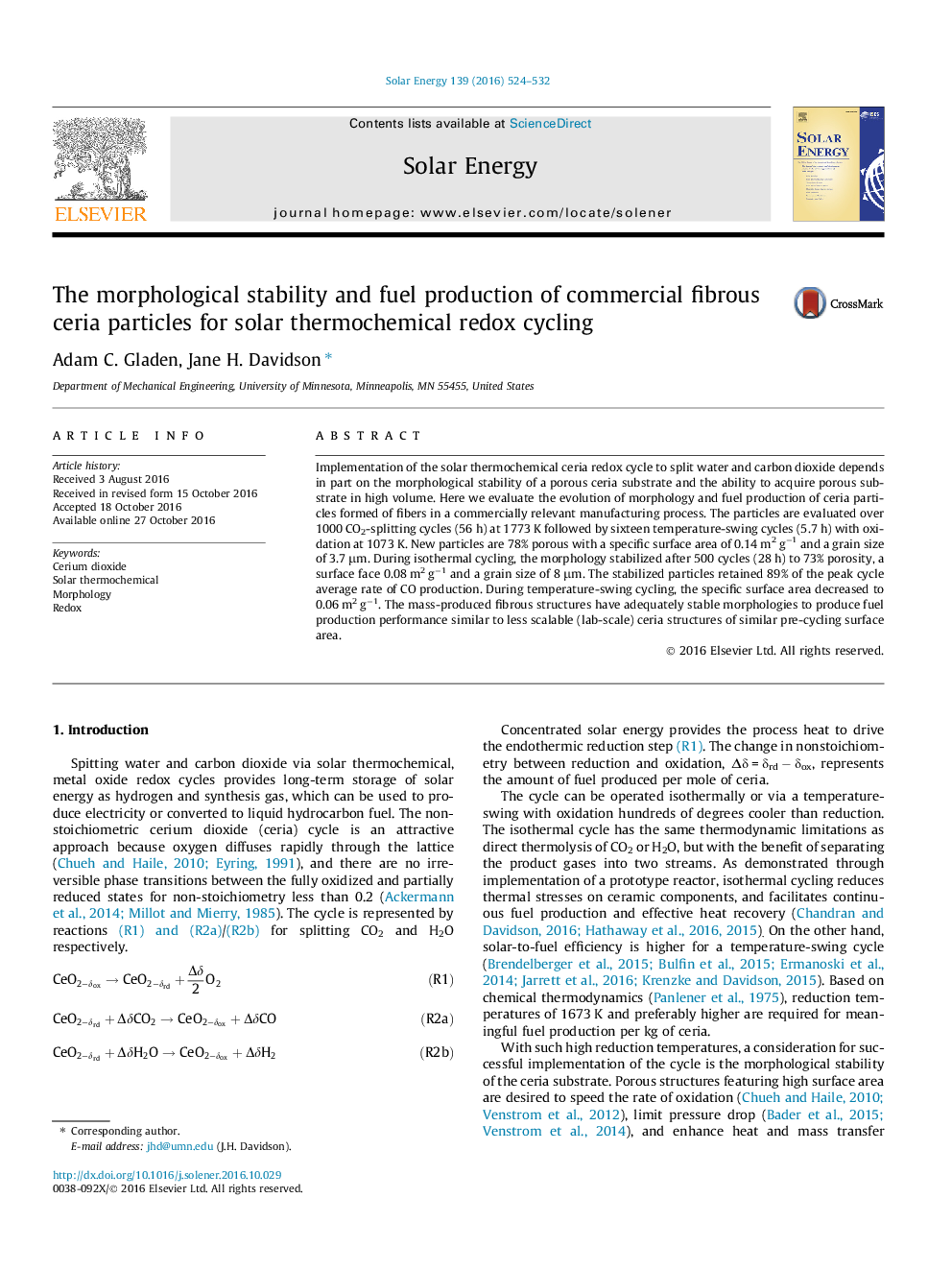| Article ID | Journal | Published Year | Pages | File Type |
|---|---|---|---|---|
| 5451414 | Solar Energy | 2016 | 9 Pages |
Abstract
Implementation of the solar thermochemical ceria redox cycle to split water and carbon dioxide depends in part on the morphological stability of a porous ceria substrate and the ability to acquire porous substrate in high volume. Here we evaluate the evolution of morphology and fuel production of ceria particles formed of fibers in a commercially relevant manufacturing process. The particles are evaluated over 1000 CO2-splitting cycles (56 h) at 1773 K followed by sixteen temperature-swing cycles (5.7 h) with oxidation at 1073 K. New particles are 78% porous with a specific surface area of 0.14 m2 gâ1 and a grain size of 3.7 μm. During isothermal cycling, the morphology stabilized after 500 cycles (28 h) to 73% porosity, a surface face 0.08 m2 gâ1 and a grain size of 8 μm. The stabilized particles retained 89% of the peak cycle average rate of CO production. During temperature-swing cycling, the specific surface area decreased to 0.06 m2 gâ1. The mass-produced fibrous structures have adequately stable morphologies to produce fuel production performance similar to less scalable (lab-scale) ceria structures of similar pre-cycling surface area.
Related Topics
Physical Sciences and Engineering
Energy
Renewable Energy, Sustainability and the Environment
Authors
Adam C. Gladen, Jane H. Davidson,
